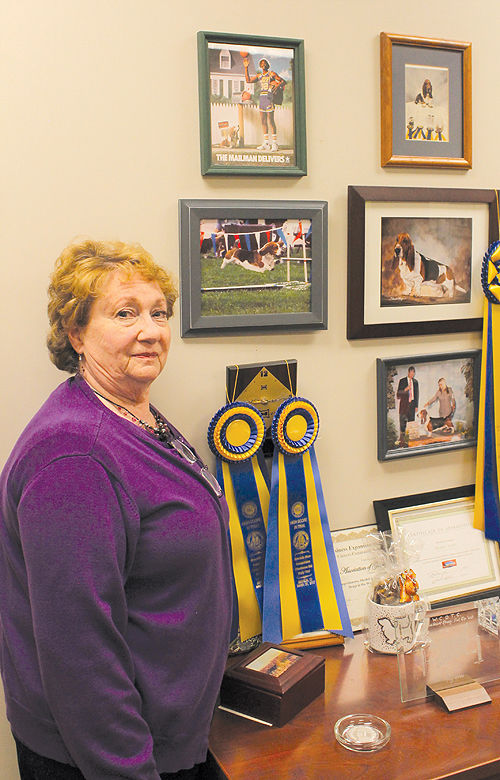When Debbie Hatt and her husband Tom came to Carbon County in the 1970s, they came here because of economic development.
Now and for the past 30 years she has helped many with that very thing in the positions she has held at the Southeastern Utah Association of Local Governments.
“We ended up here because a friend who was the CFO for McCulloch Oil, contract manager for American Electric Power, a company that owned some mines here told us about the area and that was also shortly after the 1972 oil embargo when coal was going to save the world. My husband was in construction and there was the idea that there was all this housing that was going to be built in the area.”
Happy to come here with a bright future in construction they bought a place in Helper and he began his work.
“That house was the only one we could find that was for sale in the county,” she said. “And we still live in it.”
That period of time was a heady one in the area. It was when the power plants were being built and there was talk of a Hunter 4 unit going in. The economy was projected to become so big that even the little town of Emery was projected at the time to expect 8,000 people to be living there within a few years. But in the early 1980s all that came “to a screeching halt.”
“Regardless of that, however, the reason we moved here had not changed,” she said. “We liked it here and we didn’t want to go back to southern California.”
She started working for a mining company in 1976 and was there until it closed down in 1979. Then she worked while she went to school in various capacities. For a while she found herself in a new job every six months and with her husband being in the construction business in a poor economy things got tough at times.
She worked for Commercial Security Bank, Ginco Mine Supply, Long Airdox and Utah Power and Light. Two days after she was hired by UP&L they announced layoffs and as the bumping down the line took place she was displaced. It wasn’t long after that that she started working for the AOG in 1987. Bill Howell was the director at the time and she began as a bookkeeper.
“It was only going to be temporary because the business manager had retired and they needed someone to come in and catch things up,” she said. “The big thing at the time was the JTPA (Job Training Partnership Act) and I helped with that.”
The location of the association’s headquarters at the time was in the industrial park near where the USU Eastern Heavy Duty Trucking department is now housed. They moved over to what was then the Reeves School Building in the early mid 1990s. There was a lot of work to be done on the building because it had deteriorated and with grant money it was brought up to useful condition. The AOG occupied one section of the building and the other part housed the Business and Technical Assistance Center (and thus the name, the BTAC).
Business manager
She became the permanent business manager of the organization in 1988 and still, to this day, as executive director, keeps a lot of the responsibility for that position. A few months after the business manager position became permanent the individual who was running the Community Development Block Grant Program (CDBG) left.
“It provides funding to do community development type projects and it gave me a chance to get out, travel and be involved in the whole district (Carbon, Emery, Grand and San Juan Counties). With that money we developed a housing rehab program, built senior centers, the food banks, parks, and some of the trail systems in Moab and with the aid of some other dollars the nice part of the central city area in that town.”
In 2011 she became executive director when Howell retired. While she is responsible for the entire operation she has two programs she personally runs; the Economic Development Planning Grant and the CDBG program.
Funding for all programs at SEUALG comes from a variety of sources, but is by and large federal dollars. About 30 percent comes from the state.
The AOG was established in 1969 under the original Interlocal Cooperation Agreements Act. The AOG was originally a regional planning organization. A lot of what they have dealt with over the years has to do with public lands. There are seven AOGs in the state of Utah. The two urban agencies are more into transportation planning while other organizations run the social programs. In the rural areas the AOGs do it all, while transportation planning is very small because there is no mass transit.
Her favorite programs she has worked with are the CBDG program, an assignment which she gave up when she became executive director, but has had to assume the reins again in the last year because of funding cuts to the agency that resulted in people leaving and their jobs not being filled.
“I really enjoy being able to say ‘I helped accomplish that,” she said as she explained that the program includes working with individual communities on what they want to do and how they want to accomplish things in the areas.
Other things she is satisfied with are many. For instance the Spouse Abuse Center in Moab and the food banks in the region.
“Nancy Bentley and I worked on that (the Spouse Abuse Center) over 20 years ago,” she said. “Also physically building the three food banks in the region was great. We had foodbanks before that but weren’t located in buildings with good warehouses and the proper conditions.”
Debbie Hatt, SEUALG director, to retire in June

Deborah Hatt stands in front of photos and ribbons of her dogs that have won numerous awards.
